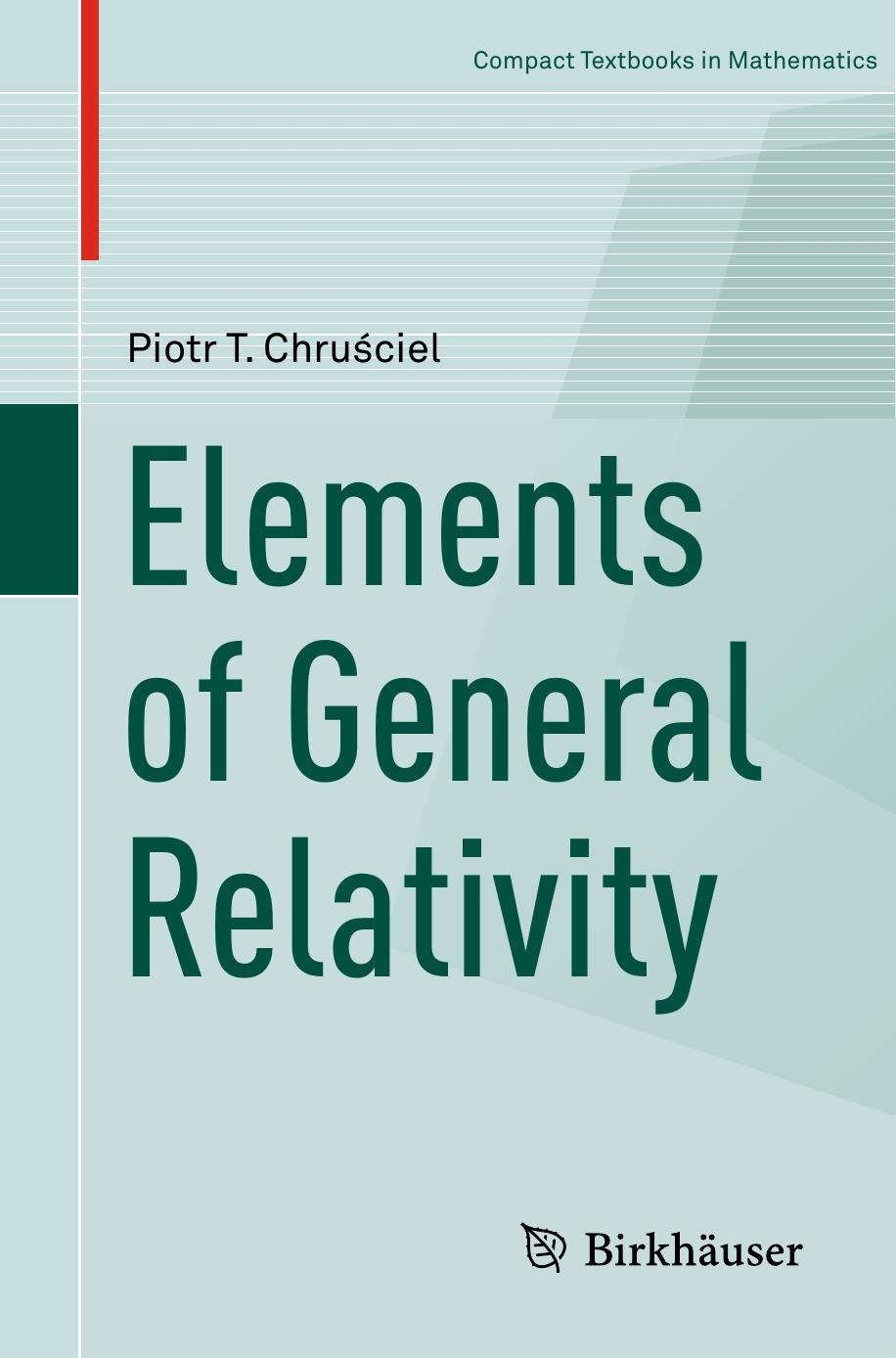Elements of General Relativity by Piotr T. Chruściel

Author:Piotr T. Chruściel
Language: eng
Format: epub, pdf
ISBN: 9783030284169
Publisher: Springer International Publishing
(4.3.13)
In other words, h(X, Y ) coincides with g(X, Y ) when both expressions are defined, but we are only allowed to consider vectors tangent to when using h.
Some comments are in order: If g is Riemannian, then normals to are spacelike, and (4.3.13) defines a Riemannian metric on . For Lorentzian g’s, it is easy to see that h is Riemannian if and only if vectors orthogonal to are timelike, and then is called spacelike. Similarly, h is Lorentzian if and only if vectors orthogonal to are spacelike, and then is called timelike. When the normal direction to is null, then (4.3.13) defines a symmetric tensor on with signature (0, +, ⋯ , +), which is degenerate and therefore not a metric; such hypersurfaces are called null, or degenerate.
If is not degenerate, it comes equipped with a Riemannian or Lorentzian metric h. This metric defines a measure dμh, using (4.3.3) with g there replaced by h, which can be used to integrate over .
We are ready now to formulate the Stokes theorem for open bounded sets: Let Ω be a bounded open set with piecewise differentiable boundary and assume that there exists a well-defined field of exterior-pointing conormals N = Nμdxμ to Ω. Then for any differentiable vector field X it holds that
Download
Elements of General Relativity by Piotr T. Chruściel.pdf
This site does not store any files on its server. We only index and link to content provided by other sites. Please contact the content providers to delete copyright contents if any and email us, we'll remove relevant links or contents immediately.
| Algebraic Geometry | Analytic Geometry |
| Differential Geometry | Non-Euclidean Geometries |
| Topology |
Modelling of Convective Heat and Mass Transfer in Rotating Flows by Igor V. Shevchuk(6218)
Weapons of Math Destruction by Cathy O'Neil(5819)
Factfulness: Ten Reasons We're Wrong About the World – and Why Things Are Better Than You Think by Hans Rosling(4482)
Descartes' Error by Antonio Damasio(3160)
A Mind For Numbers: How to Excel at Math and Science (Even If You Flunked Algebra) by Barbara Oakley(3100)
Factfulness_Ten Reasons We're Wrong About the World_and Why Things Are Better Than You Think by Hans Rosling(3041)
TCP IP by Todd Lammle(3008)
Applied Predictive Modeling by Max Kuhn & Kjell Johnson(2905)
Fooled by Randomness: The Hidden Role of Chance in Life and in the Markets by Nassim Nicholas Taleb(2854)
The Tyranny of Metrics by Jerry Z. Muller(2844)
The Book of Numbers by Peter Bentley(2779)
The Great Unknown by Marcus du Sautoy(2532)
Once Upon an Algorithm by Martin Erwig(2471)
Easy Algebra Step-by-Step by Sandra Luna McCune(2465)
Lady Luck by Kristen Ashley(2409)
Practical Guide To Principal Component Methods in R (Multivariate Analysis Book 2) by Alboukadel Kassambara(2377)
Police Exams Prep 2018-2019 by Kaplan Test Prep(2354)
All Things Reconsidered by Bill Thompson III(2257)
Linear Time-Invariant Systems, Behaviors and Modules by Ulrich Oberst & Martin Scheicher & Ingrid Scheicher(2229)
